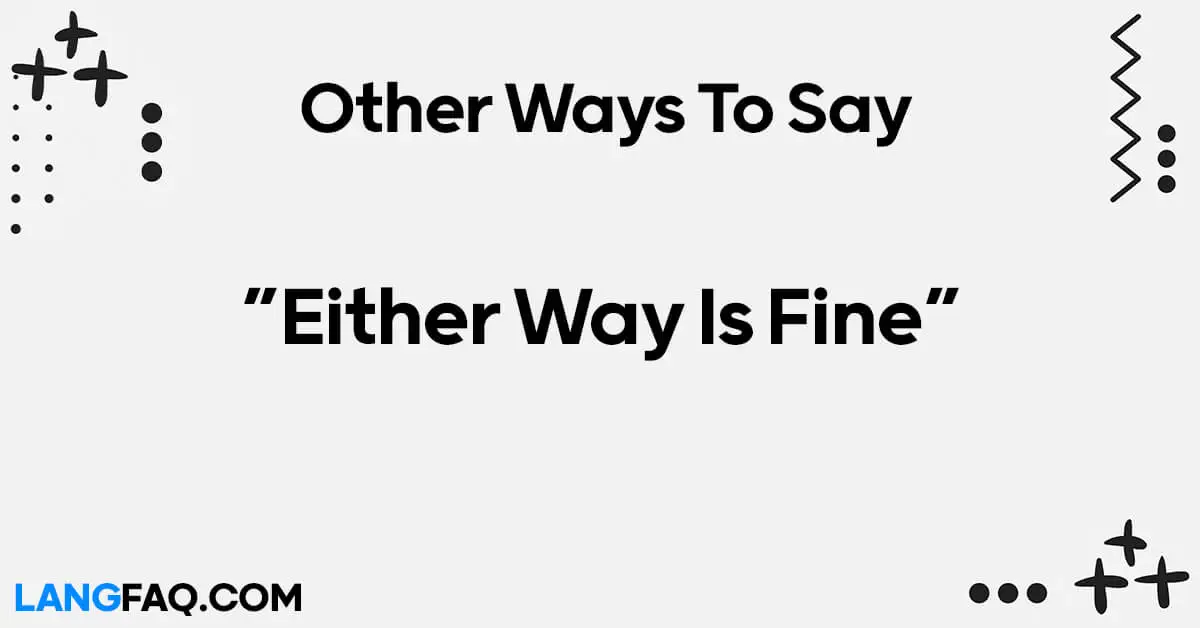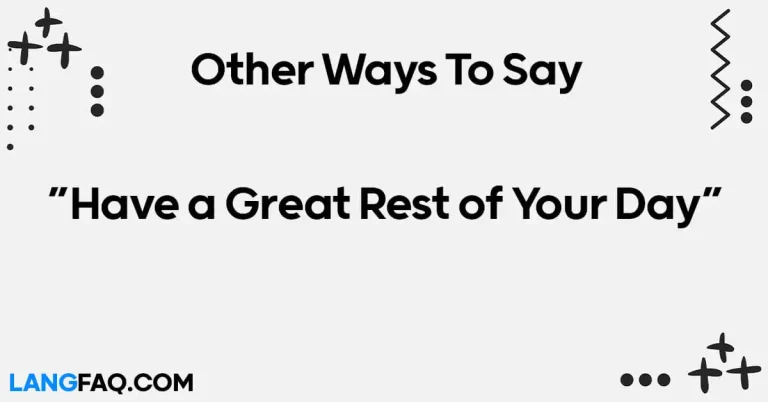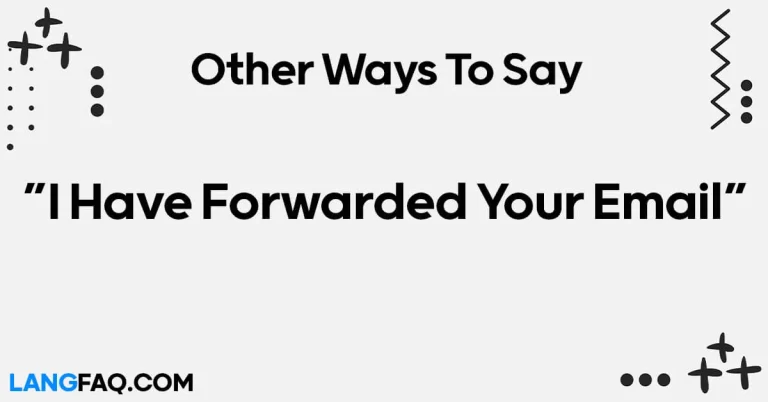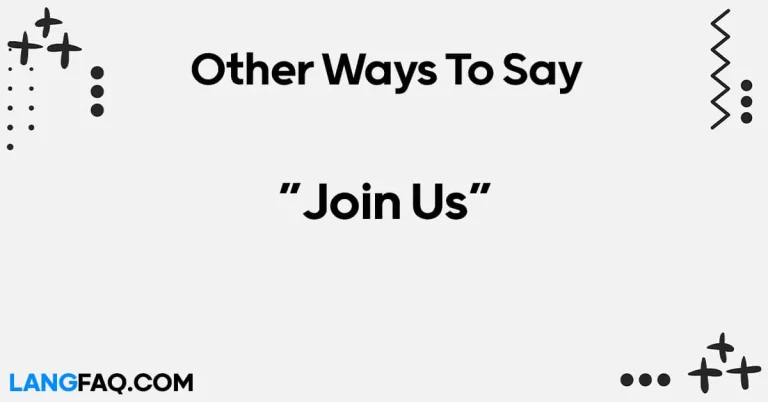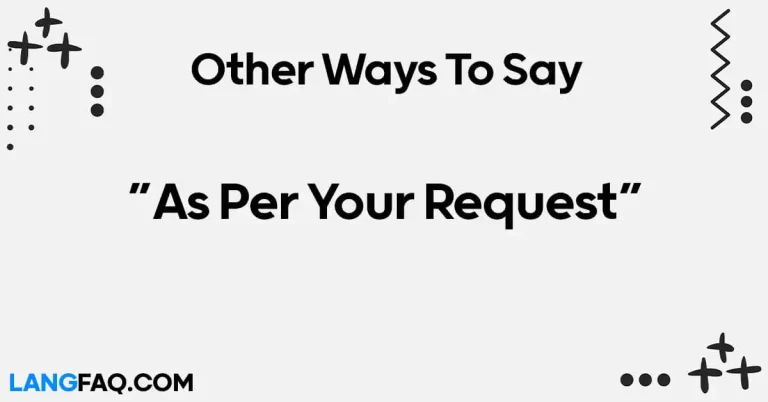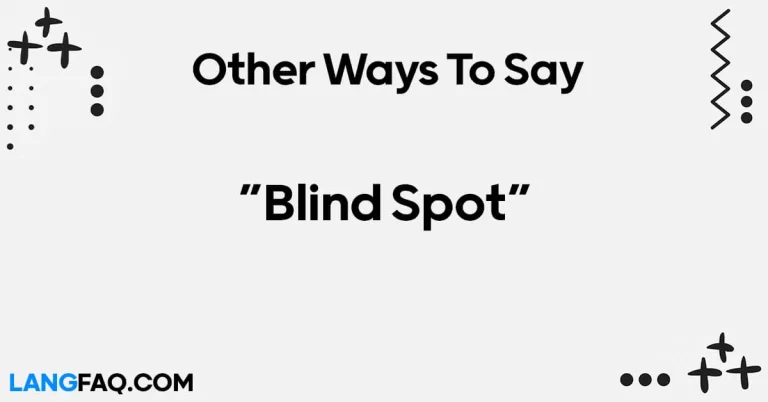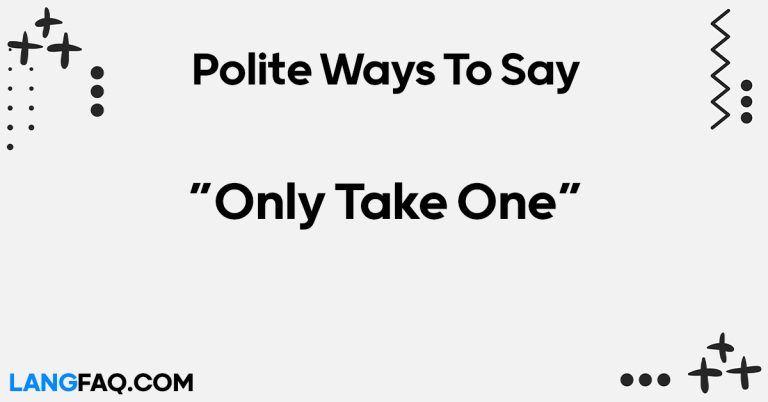Understanding the nuances of expressing agreement is crucial for effective communication. While “Either Way Is Fine” serves its purpose, embracing variety adds depth and clarity to your interactions.
12 Other Ways to Say “Either Way Is Fine”
Here are 12 other ways to express “Either Way Is Fine”:
- “It’s all good.”
- “Whatever works for you.”
- “I’m flexible.”
- “No preference on my end.”
- “It’s your call.”
- “I’m easygoing about it.”
- “Either option suits me.”
- “Feel free to decide.”
- “I have no objections.”
- “You decide, I’m fine with both.”
- “I’m indifferent.”
- “Any choice is acceptable.”
Here’s a table with meanings and examples for the 12 ways to express “Either Way Is Fine”:
| Expression | Meaning | Example |
|---|---|---|
| It’s all good | Everything is acceptable or satisfactory. | “You can choose the movie. It’s all good for me.” |
| Whatever works for you | Any option that suits the other person is fine. | “Do you prefer coffee or tea? Whatever works for you.” |
| I’m flexible | Open to different options; adaptable. | “Let me know the time; I’m flexible.” |
| No preference on my end | Indicating neutrality or lack of specific choice. | “Pizza or pasta? No preference on my end.” |
| It’s your call | Giving someone else the authority to decide. | “Both routes lead to the destination. It’s your call.” |
| I’m easygoing about it | Being laid-back and unconcerned about the choice. | “Choosing the restaurant? I’m easygoing about it.” |
| Either option suits me | Both choices are acceptable. | “Monday or Tuesday for the meeting? Either option suits me.” |
| Feel free to decide | Granting permission for the other person to make the choice. | “Feel free to decide on the menu for dinner.” |
| I have no objections | Expressing no opposition or disagreement. | “Changing the meeting time? I have no objections.” |
| You decide, I’m fine with both | Giving the decision-making responsibility to the other person. | “Color for the room? You decide, I’m fine with both.” |
| I’m indifferent | Showing a lack of preference or strong opinion. | “Ice cream flavors? I’m indifferent; choose whatever you like.” |
| Any choice is acceptable | Conveying acceptance of any given option. | “Pick a day for our outing. Any choice is acceptable.” |
These expressions offer a spectrum of ways to convey openness and agreement when faced with choices. Whether it’s about decisions, preferences, or opinions, having a variety of phrases enhances communication by expressing flexibility and understanding in different situations.
Is It Correct to Say “Either Way Is Fine”?
Certainly, the phrase “Either Way Is Fine” is correct and widely used in various contexts. It’s a versatile expression that communicates flexibility and an open-minded attitude towards different options or decisions.
Is it Grammatically Correct?
Yes, the phrase is grammatically correct. It follows standard English grammar rules, where “either way” signifies two possible choices or courses of action, and “is fine” conveys approval or acceptance.
When to Use “Either Way Is Fine”:
- Casual Settings:
- Example: “Do you prefer tea or coffee?”
Response: “Either way is fine with me.”
- Example: “Do you prefer tea or coffee?”
- Decision-Making Scenarios:
- Example: “Should we meet in the morning or afternoon?”
Response: “Either way is fine; I’m flexible.”
- Example: “Should we meet in the morning or afternoon?”
- Offering Choices:
Pros of Using “Either Way Is Fine”:
- Conveys Flexibility: It indicates a willingness to go along with different options, promoting a cooperative attitude.
- Saves Time: In situations where a decision is needed but preferences are not strong, it provides a quick and agreeable response.
- Adaptable in Various Settings: Whether in professional or personal contexts, the phrase is suitable for expressing agreement without specifying a strong preference.
Cons of Using “Either Way Is Fine”:
- Lack of Specificity: In cases where a clear decision is required, this phrase might not provide enough guidance.
- May Require Clarification: Depending on the context, it could be beneficial to follow up with additional details to ensure clarity.
Variations and Synonyms:
- “Any choice works for me.”
- “I’m okay with either option.”
- “Both options are acceptable.”
- “I don’t have a preference; decide as you like.”
Professional Mail Example With “Either Way Is Fine”
Subject: Scheduling a Meeting – Either Way Is Fine
Dear [Recipient’s Name],
I trust this message finds you well. As we coordinate our calendars for the upcoming team meeting, I wanted to discuss the timing to ensure it aligns with everyone’s availability.
Considering the various time zones within our team, we have two proposed time slots: 10:00 AM GMT and 3:00 PM GMT. However, I understand that everyone’s schedule is unique, and I want to accommodate everyone as much as possible.
If you could kindly review your availability and let me know which time works best for you, that would be greatly appreciated. Alternatively, if neither of these slots suits your schedule, please propose a time that aligns with your calendar.
Either way is fine with me, and I’m committed to finding a time that suits the majority. Ensuring everyone can participate in our discussions is crucial for a productive meeting.
Looking forward to your response and our successful collaboration.
Best regards,
[Your Full Name] [Your Position] [Your Company] [Contact Information]
1. “It’s All Good”
Meaning:
Expressing that everything is acceptable or satisfactory.
Usage Scenario:
In both formal and informal situations, “It’s All Good” is a versatile phrase. Use it when you want to assure someone that their choice or decision is perfectly acceptable, creating a positive and easygoing atmosphere.
Example Sentence:
“Whether you choose a morning or afternoon meeting, it’s all good for me. I’m flexible with the schedule.”
Email Sample:
Subject: Flexible Schedule for Our Meeting
Hi [Recipient’s Name],
I hope this message finds you well. Regarding our upcoming meeting, I want to let you know that I’m flexible with the timing. Whether it’s in the morning or afternoon, it’s all good for me. Please choose the time that suits you best.
Looking forward to our discussion!
Best regards, [Your Name]
Variations:
- “Everything’s fine.”
- “Anytime works for me.”
Insights:
The phrase “It’s All Good” is informal and works well in casual settings. It conveys a relaxed attitude and emphasizes your flexibility in different situations.
2. “Whatever Works for You”
Meaning:
Indicating that any option which suits the other person is acceptable.
Usage Scenario:
This phrase is ideal when you want to give the other person the freedom to make a choice based on their preferences. It is commonly used in both professional and personal settings.
Example Sentence:
“Regarding the project timeline, we can go with your proposal or mine. Whatever works for you.”
Email Sample:
Subject: Project Timeline Options
Hi [Recipient’s Name],
I hope you’re doing well. I wanted to discuss the project timeline with you. We have two proposals, and I’m open to either. Whatever works for you, let me know your preference.
Thanks, [Your Name]
Variations:
- “Whatever suits you.”
- “I’m open to your choice.”
Insights:
“Whatever Works for You” demonstrates a cooperative and accommodating attitude, fostering collaboration in decision-making.
3. “I’m Flexible”
Meaning:
Being open to different options and adaptable.
Usage Scenario:
“I’m Flexible” is suitable when you want to convey your willingness to adjust or compromise, especially in work-related or collaborative projects.
Example Sentence:
“For the upcoming team-building activity, I’m flexible with the location. Feel free to suggest any place that works for everyone.”
Email Sample:
Subject: Team-building Venue
Hello Team,
As we plan our upcoming team-building activity, I want to mention that I’m flexible with the venue. Please feel free to suggest any location that works for the majority.
Looking forward to a great time together!
Best, [Your Name]
Variations:
- “I’m open to suggestions.”
- “I can adapt to different options.”
Insights:
Expressing flexibility in a professional context showcases your ability to work harmoniously with others, promoting a positive team environment.
4. “No Preference on My End”
Meaning:
Indicating neutrality or a lack of a specific choice.
Usage Scenario:
Use this phrase when you want to convey that you don’t have a strong preference and are open to any option.
Example Sentence:
“Regarding the team lunch, no preference on my end. I’m fine with any cuisine you all decide.”
Email Sample:
Subject: Team Lunch Options
Hi Team,
I hope you’re all well. I wanted to discuss our upcoming team lunch. Personally, I have no preference on my end, so feel free to choose any restaurant or cuisine that suits everyone.
Best regards, [Your Name]
Variations:
- “I’m impartial.”
- “I don’t have a strong preference.”
Insights:
Expressing neutrality is valuable in group decisions, preventing any undue influence and promoting inclusivity.
5. “It’s Your Call”
Meaning:
Giving someone else the authority to make a decision.
Usage Scenario:
Use this phrase when you want to convey that the other person has the freedom to decide, especially in situations where their input is crucial.
Example Sentence:
“Regarding the project approach, both methods have merits. It’s your call on which one we should proceed with.”
Email Sample:
Subject: Decision Time for the Project Approach
Dear [Recipient’s Name],
I hope this email finds you well. As we discuss the project approach, both methods seem viable. I trust your expertise, so it’s your call on which one we should proceed with.
Looking forward to your decision.
Best regards, [Your Name]
Variations:
- “The decision is yours.”
- “Feel free to decide.”
Insights:
Empowering others to make decisions fosters a sense of responsibility and collaboration in a team or partnership.
6. “I’m Easygoing About It”
Meaning:
Being laid-back and unconcerned about the choice.
Usage Scenario:
Use this phrase when you want to convey a relaxed attitude, especially in informal or casual settings.
Example Sentence:
“Selecting the color for the event banners? I’m easygoing about it. Whatever you think suits the theme.”
Email Sample:
Subject: Banner Color Choice
Hi [Recipient’s Name],
Hope you’re doing well. I wanted to touch base about the banner color for our upcoming event. I’m easygoing about it, so feel free to choose a color that complements the theme.
Best, [Your Name]
Variations:
- “I’m not fussy.”
- “No stress; choose what you like.”
Insights:
“I’m Easygoing About It” communicates a laid-back demeanor, reducing stress in decision-making processes.
7. “Either Option Suits Me”
Meaning:
Indicating that both presented choices are acceptable.
Usage Scenario:
Use this phrase when you want to express that you have no preference between two options, emphasizing your flexibility.
Example Sentence:
“For the team-building activity, either option suits me. Both ideas sound like a great way to bond.”
Email Sample:
Subject: Team-building Activity Options
Hey Team,
Hope you’re all excited about the upcoming team-building activity. Just wanted to say that either option suits me. Looking forward to a fantastic day together!
Best, [Your Name]
Variations:
- “Both are fine by me.”
- “I’m good with either choice.”
Insights:
This phrase highlights your openness to different possibilities, fostering a collaborative spirit within a group.
8. “Feel Free to Decide”
Meaning:
Granting permission for the other person to make the choice.
Usage Scenario:
Use this phrase when you want to convey that you trust the other person’s judgment and give them the autonomy to decide.
Example Sentence:
“Choosing the venue for the celebration? Feel free to decide; I trust your taste.”
Email Sample:
Subject: Celebration Venue Decision
Hi [Recipient’s Name],
I hope you’re doing well. Regarding the venue for the celebration, feel free to decide. I trust your taste, and I’m sure it will be perfect.
Cheers, [Your Name]
Variations:
- “You have the final say.”
- “It’s in your hands.”
Insights:
“Feel Free to Decide” emphasizes trust and respect in relationships, whether personal or professional.
9. “I Have No Objections”
Meaning:
Expressing no opposition or disagreement.
Usage Scenario:
Use this phrase when you want to assure others that you don’t have any issues with a particular decision or choice.
Example Sentence:
“Changing the project timeline? I have no objections; let’s proceed as planned.”
Email Sample:
Subject: Project Timeline Adjustment
Hi Team,
I hope this message finds you well. If there’s a need to change the project timeline, I have no objections. Let me know the details.
Best, [Your Name]
Variations:
- “I’m on board with that.”
- “No concerns on my end.”
Insights:
“I Have No Objections” fosters a cooperative environment, showing your willingness to collaborate without resistance.
10. “You Decide, I’m Fine with Both”
Meaning:
Giving the decision-making responsibility to the other person, expressing contentment with either option.
Usage Scenario:
Use this phrase when you want to convey that you trust the other person’s judgment, and both options are acceptable to you.
Example Sentence:
“Choosing the color scheme for the project? You decide; I’m fine with both combinations.”
Email Sample:
Subject: Project Color Scheme
Hello [Recipient’s Name],
I hope you’re well. When it comes to the color scheme for the project, you decide; I’m fine with both options. Looking forward to your choice.
Best regards, [Your Name]
Variations:
- “I trust your judgment.”
- “Either option works for me.”
Insights:
This phrase not only shows flexibility but also builds trust and collaboration within a team or partnership.
11. “I’m Indifferent”
Meaning:
Showing a lack of preference or strong opinion.
Usage Scenario:
Use this phrase when you want to convey that you don’t have a strong inclination towards one option over another.
Example Sentence:
“Ice cream flavors for the party? I’m indifferent; choose whatever you like, and I’ll enjoy it.”
Email Sample:
Subject: Party Planning – Ice Cream Flavors
Hi [Recipient’s Name],
Hope you’re doing well. For the upcoming party, the choice of ice cream flavors? I’m indifferent; choose whatever you think will be a hit.
Thanks, [Your Name]
Variations:
- “I don’t have a preference.”
- “Any option is fine with me.”
Insights:
“I’m Indifferent” is a straightforward way to express a lack of strong opinion, allowing others the freedom to decide.
12. “Any Choice Is Acceptable”
Meaning:
Conveying acceptance of any given option.
Usage Scenario:
Use this phrase when you want to express that you are open to various choices and find all options acceptable.
Example Sentence:
“Pick a day for our outing. Any choice is acceptable; I’m looking forward to spending time together.”
Email Sample:
Subject: Outing Planning – Choose a Date
Hello [Recipient’s Name],
Excited about our upcoming outing! Any choice is acceptable for the date. Looking forward to a fun day together.
Best, [Your Name]
Variations:
- “I’m open to any option.”
- “Feel free to choose.”
Insights:
“Any Choice Is Acceptable” emphasizes adaptability and a positive attitude toward different possibilities.
FAQs
Is it necessary to diversify agreement expressions?
Absolutely! Diversifying expressions adds depth to your communication, making it more engaging and expressive.
How do I choose the right agreement expression?
Consider the context and formality of the situation. Opt for expressions that align with the tone of the conversation.
Can I use these alternatives in professional settings?
Certainly! Many of these alternatives are suitable for both casual and professional conversations, providing versatility.
Why is agreement diversity important?
Diverse expressions prevent communication from becoming monotonous, keeping interactions lively and dynamic.
Should I use formal expressions in casual conversations?
While it’s not necessary, incorporating formal expressions can add a touch of sophistication to your communication.
How do I convey agreement without sounding repetitive?
Experiment with a mix of expressions, adapting them to different situations to avoid monotony.
Conclusion
Incorporating diverse ways to say “Either Way Is Fine” enhances your communication skills and fosters more engaging conversations. Embrace variety, experiment with these alternatives, and witness the positive impact on your interactions.

